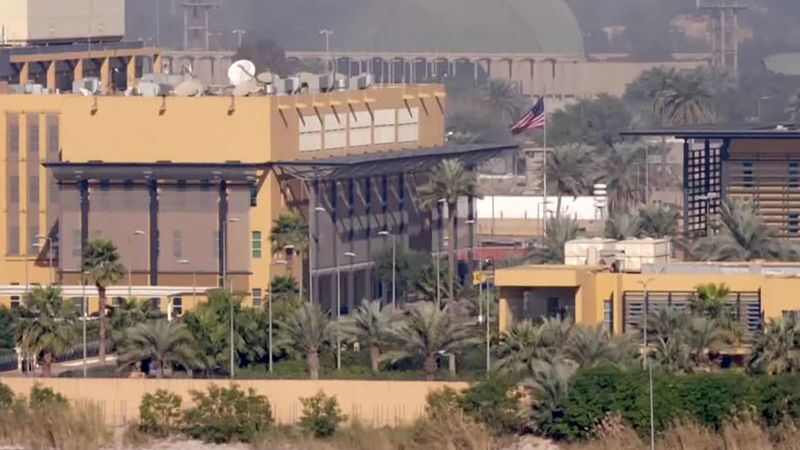The United States government is taking decisive steps to enhance the safety of its personnel stationed in the Middle East, as evidenced by recent actions taken by the State and Defense departments. On Wednesday, officials from both entities confirmed that they are facilitating the swift departure of non-essential staff from various sites across this geopolitically charged region. Although the specific impetus for this sudden maneuver remains ambiguous, a defense official highlighted that the U.S. Central Command is closely monitoring escalating tensions within the area.
These developments come against a backdrop of intensifying hostilities involving Iran and Israel. Reports indicate that these tensions have urgently prompted a rethinking of military and diplomatic strategies, particularly as the Trump administration seeks to negotiate a renewed nuclear deal with Iran. President Donald Trump has been kept apprised of these evolving personnel movements, emphasizing the centrality of security in U.S. foreign relations, especially in a region that has historically been fraught with conflict.
Secretary of Defense Pete Hegseth has given the nod for military families to voluntarily depart from various military installations across the Middle East, a move indicative of rising security threats. The prevailing sentiment from defense officials is clear: the safety of U.S. military personnel and their families is of paramount importance. To this end, General Michael Kurilla, the commander of Central Command (CENTCOM), chose to postpone a scheduled appearance before a Senate committee to address the prevailing security climate. This reflects the gravity of the situation and the administration’s prioritization of personnel safety amid increasing uncertainty.
Moreover, the State Department is poised to order the departure of non-essential staff from U.S. embassies located in key Middle Eastern allies such as Iraq, Bahrain, and Kuwait, responding to the alarming uptick in security concerns. Sources familiar with the decision cited the necessity of reassessing U.S. diplomatic footprints due to heightened risks in these nations. This proactive approach extends to the U.S. consulate in Erbil, located within Iraqi Kurdistan, even as local Iraqi officials assert that these personnel shifts are not connected to the security situation within Iraq itself.
On an anecdotal note, President Trump expressed uneasiness regarding the potential for a nuclear agreement with Iran, admitting in a recent interview that he feels increasingly pessimistic about the negotiations. He noted that Tehran’s actions appear to be obstructing the process, stating, “They seem to be delaying,” which echoed his broader concerns regarding Iranian motives and its nuclear ambitions.
In a conversation with Israeli Prime Minister Benjamin Netanyahu, Trump advised caution regarding the prospect of military action against Iran, signaling an interest in de-escalating tensions while pursuing negotiations. This telephone call, described as particularly smooth, came against a backdrop of U.S. intelligence suggesting that Israel might be considering an attack on Iranian nuclear facilities. This revelation adds another layer of complexity to the dynamics at play in the region, as officials grapple with conflicting assessments of Israeli intentions and the likelihood of any military action occurring.
On the Iranian front, the country’s defense minister warned that failure in nuclear negotiations could lead to conflict, significantly suggesting that U.S. forces would be compelled to withdraw from the region. Brigadier General Aziz Nasirzadeh stated that any ensuing conflict would yield considerable casualties for U.S. and allied forces, underscoring the precarious position of U.S. military bases in the region.
These tensions were encapsulated by remarks from Iranian officials, who suggested that all U.S. military installations are within the striking distance of Iranian military capabilities. Such sentiments paint a sobering picture of the potential fallout from a breakdown in diplomatic discussions. As stakeholders on both sides weigh their options, the current period may well serve as a pivotal moment for U.S.-Iran relations, with wider implications for Middle Eastern stability.
In conclusion, the recent developments indicate a heightened alertness from the U.S., driven by escalating tensions and the interplay of complex forces in the region. With key personnel mobilizations and diplomatic conversations shaping the narrative, it remains to be seen how these dynamics will unfold and influence future engagements in the Middle East.



